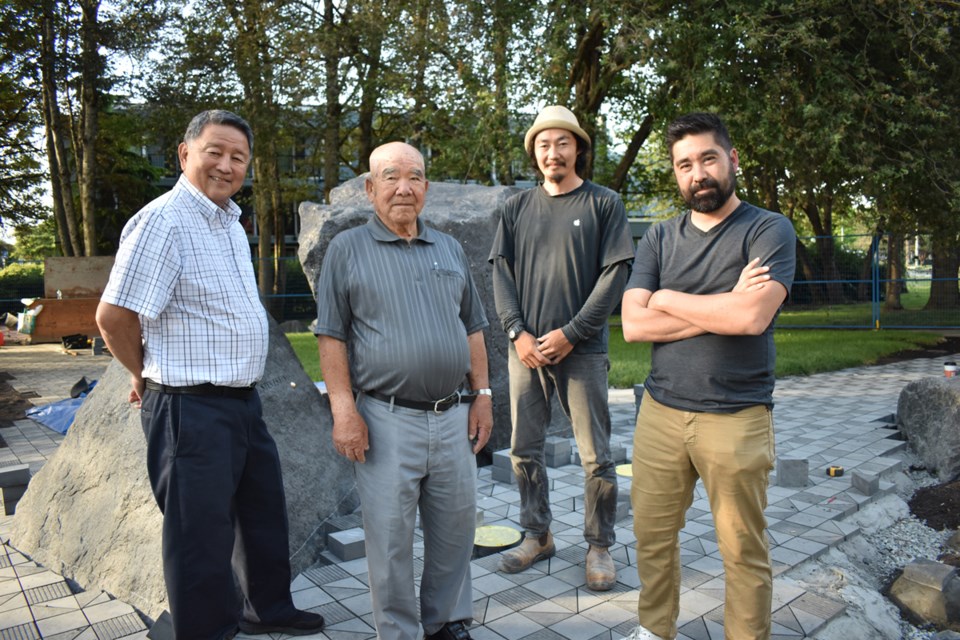At the age of 20, Toshio Murao had already experienced a lot of racism and discrimination in Canada. Then he was thrown into a prisoner-of-war camp for five years.
Born at the Japanese Hospital in Steveston in 1920, his family sent him back to Japan to go to school because he wasn’t allowed in Canadian schools. He came back at the age of 16, and when a few years later, Second World War was breaking out, he joined a protest in downtown Vancouver to fight against internment.
At the protest, a riot broke out and Murao was thrown in jail and subsequently was sent to a POW camp in Angler, Ont., with German and Italian soldiers who had been taken prisoner in Europe.
Before the war, there were 2,000 people of Japanese descent living in Richmond, many of them working in the fishing industry in Steveston. As families were disappearing to camps, anxiety was rising among the community, Murao said.
After he was released, he went back to Japan, angry at his treatment by the Canadian government.
Murao’s story is just one of many of Steveston’s Nikkei population, and it’s these stories of xenophobia and displacement, including his own family’s, that inspired Kelvin Higo to push the city for a memorial in Steveston. It will be unveiled this Saturday, June 22 at 1 p.m.
The project was started in 2017 as the 75th anniversary of the removal of the Japanese from Steveston and Richmond was approaching.
“I really want to honour our parents and grandparents for the injustice they suffered as well as the resilience and perseverance to survive that,” Higo said.
But he also wants future generations to learn about the history of the Japanese as a warning against xenophobia.
Higo pointed out that just last week someone suggested migrant children in the United States could be locked up in former Japanese internment camps.
“We talk about these things not being repeated in history, but I think it’s so easy for that to happen again if we’re not vigilant,” Higo said.
Like other coastal Japanese families, Higo’s family was given the choice of going to an internment camp or working on a farm. His family chose the latter and ended up on a sugar beet farm in Alberta for the duration of the war.
On April 1, 1949, Japanese families were finally allowed back to the west coast of B.C. as well as given the vote – that’s when Higo’s family returned to Steveston. Some Japanese were worried about the reaction they’d receive from locals, and, while there was some animosity, Higo explained, many of the fishing-related companies were happy to have them back working in the industry.
Murao, his father-in-law, came back from Japan in 1956 with his family – including his daughter Kay whom Higo would eventually marry – and worked in the fishing industry until he was 70.
About 800 Nikkei returned to Richmond and they got involved in community building, for example, building the Steveston Community Centre and starting sports clubs.
Joseph Fry with Hapa Collaborative was chosen to design the Steveston Nikkei Memorial.
As the site beside the Steveston Tram building was being considered for the memorial, Hapa Collaborative pitched the idea of making the whole site a memorial instead of just having one piece of public art.
The Steveston Nikkei Memorial includes two large boulders with a crevasse between them that represents the separation of the Japanese community from their home in Steveston as they were sent out to internment camps in B.C. and even farther to work on farms. The boulders are granite from Quebec and represent the fact the Japanese were sent as far away as the Canadian Shield.
The names of the internment camps are engraved into the boulders. There is also a constellation of markers symbolizing the other places, too many to name, where the Japanese were sent. The paving stones on the ground represent the weaving Japanese women did during internment despite the harsh conditions.
Hapa walks the line between public art and landscaping, Fry explained, and this project had a very personal connection for him.
His maternal grandparents were sent from their home in Japantown on Powell Street in Vancouver to an internment camp in Slocan during the war. His grandfather was also made to work on the roads in Jasper.
Later his mother, as a teacher, would tell stories of the camps, something her parents had experienced, and people would express their disbelief, saying that couldn’t have happened in Canada.
Fry hopes the memorial will link generations – honour his grandparents’ generation but also teach his kids about history.
“This isn’t just about the Japanese experience – it’s something we’re still seeing today and we want that to be a statement about that,” he said.



